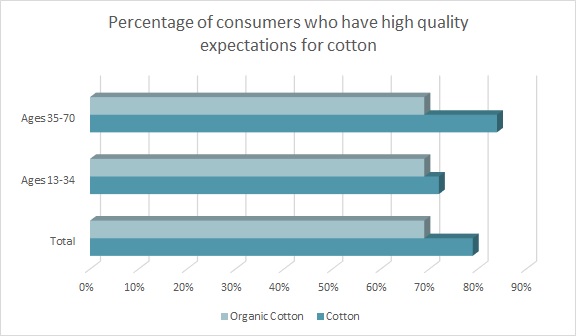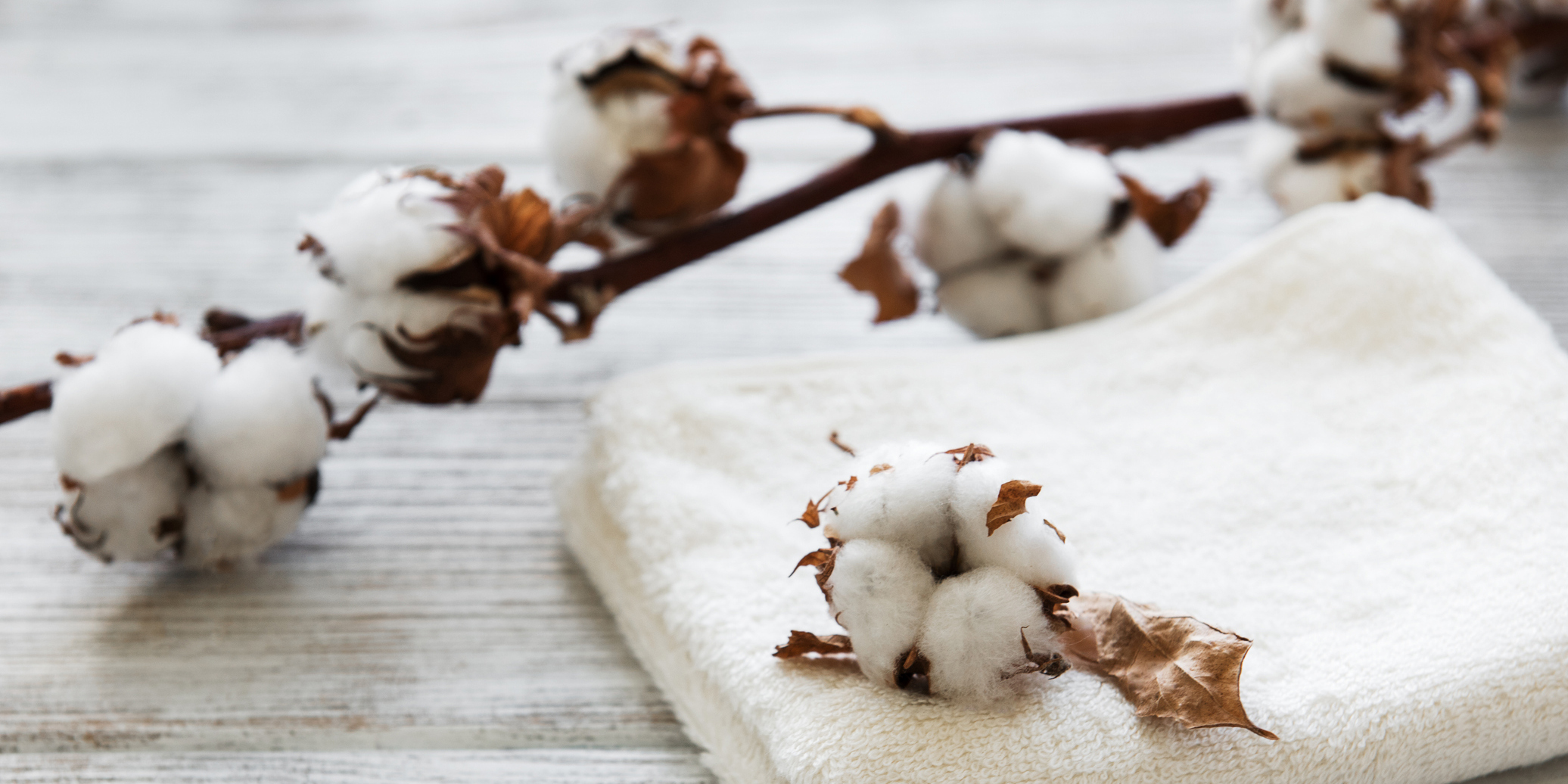At a time when the world seems to be focused on sustainability, consumers have differing ideas on terms that describe different types of cotton and what “organic cotton” actually means.
In general, consumers have a high opinion of all cotton and cotton-rich apparel. Conventional cotton represents 99 percent of the cotton apparel available at retail, while organic cotton constitutes less than one percent. Therefore, to meet market needs, many brands and retailers can turn to conventionally grown cotton when looking for a natural and sustainable fiber, especially when they realize the distinction between organic and conventional cotton is often misunderstood or misconstrued in sustainability conversations and marketing materials.
Both organic and conventional cotton, when produced responsibly, have the ability to reduce certain environmental impacts. However, it is important to remember less than 1 percent of the world’s cotton supply qualifies as organic.”
Dr. Jesse Daystar
Vice President & Chief Sustainability Officer, Cotton Incorporated
Brands who are contemplating whether to source organic or conventional cotton should know that 77 percent of consumers say that conventional cotton is safe for the environment, and 78 percent of consumers say organic cotton is safe, according to the Cotton Council International and Cotton Incorporated 2021 Sustainability Study. Consumers also agree that any type of cotton is safer for the environment compared to manmade fibers.
Of note, 66 percent of consumers have high quality expectations for organic cotton, according to the 2019 Cotton Incorporated Lifestyle Monitor™ Survey. Still, significantly more (80 percent) have the same high expectations for cotton in general.

Conventional cotton also fares very well when compared to manmade fiber apparel. More than 8 in 10 consumers (85 percent) say cotton clothes are their favorite to wear, the most comfortable (84 percent), the softest (84 percent), and the most sustainable (82 percent), according to the Monitor™ research.
When determining if an apparel item is sustainable, 43 percent of consumers say they see if it’s made with natural fibers like cotton, according to the 2021 Cotton Incorporated Sustainability Study. That’s followed by organic fibers (34 percent).
In researching organic cotton, it’s not unusual to find articles saying, “it’s not processed with harsh chemicals,” “it’s more durable than conventional cotton,” and “it uses less water than conventional cotton.”
The problem is, these articles have been shown to use outdated data or research that engages in confirmation bias, according to the Transformers Foundation, an industry non-profit representing the denim industry, which produced a report on finding and using credible information to make improvements in the fashion industry.
“Making an argument or persuading an audience isn’t a justification for using obsolete or inaccurate data, cherry-picking data or using it selectively and out of context to persuade,” states the Transformers Foundation report.
Actually, conventional cotton does not typically require more water than organic. Also, organic cotton can be grown and processed using chemicals — nearly 26,000 different types of chemicals are approved by the Global Organic Textile Standard, some of which are allowed in the growth of organic cotton. As for any possible durability concerns, no studies have surfaced proving organic cotton is more durable than the conventionally grown variety.
“Both organic and conventional cotton can be grown with improved sustainability outcomes when applying a common set of best management practices,” states Dr. Jesse Daystar, vice president, chief sustainability officer, Cotton Incorporated. “Both organic and conventional cotton, when produced responsibly, have the ability to reduce certain environmental impacts. However, it is important to remember less than 1 percent of the world’s cotton supply qualifies as organic. This means the vast majority of cotton grown is through a conventional system that has a wider range of management options (e.g., synthetic crop protection products and fertilizers) that typically yield more fiber per planted acre of cotton.”
From August 2019 through July 2020, cotton farmers in the U.S. produced 19.9 million bales of conventional cotton versus approximately 32,000 organic bales. That helps explain why 0.3 percent of apparel products are labeled as organic, according to Cotton Incorporated’s Retail Monitor™ survey.
Of course, there are differences between conventional and organic cotton. For instance, organic cotton growers cannot use biotech seeds and, in most cases, cannot apply synthetic pest deterrents unless other more preferred methods are insufficient to prevent or control the target pest. And, organic cotton has to be grown on land that’s free of prohibited substances for three years. Organic cotton is also subject to third-party verification and is certified by the U.S. Department of Agriculture.
Brands and makers should consider, though, that both organic and conventional cotton, when produced responsibly, have the ability to reduce certain environmental impacts. However, depending on the criteria, neither is inherently more sustainable than the other, and any cotton is preferred as the sustainable choice by consumers over manmade fibers.
“We believe that misinformation is a key reason why we aren’t moving towards positive change,” reads the Transformers Foundation report. “It is crucial for industries and society to understand the best available data and context on the environmental, social and economic impact of different fibers and systems within fashion, so that best practices can be developed and implemented, industries can make informed choices, and farmers and other suppliers and makers can be rewarded for and incentivized to operate using more responsible practices that drive more positive impacts.”
As interest in sustainability continues to grow among consumers, and as consumers continue to further educate themselves when making purchase decisions; brands and retailers have an opportunity to educate and promote their products to help consumers make informed choices on their purchase journey.
